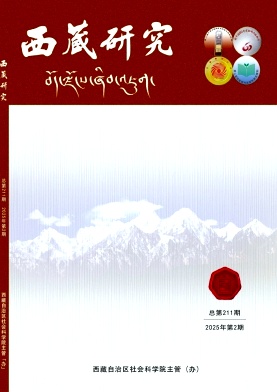| 213 | 0 | 10 |
| 下载次数 | 被引频次 | 阅读次数 |
历史上西方传教士和殖民者对喜马拉雅的认知始于他们与我国西藏的接触,西方对喜马拉雅的研究也是从藏学研究开始的。喜马拉雅地区的人类学研究形成了欧美两种不同的研究传统,其中欧洲的人类学研究更注重传统的社会和文化结构,而美国的人类学更关注变迁和推动变革。同时,它们内部也存在不同的研究路径。随着喜马拉雅地区社会经济的发展,本土人类学者的学术贡献也变得日益重要。
Abstract:Being the world's tallest mountain range,Himalayas holds a significance in terms of geography,geopolitics,and regional culture.The Himalayas were first understood by Western missionaries and colonists through their interactions with Tibet of China. Tibetan studies also served as the inspiration for early Western research on the Himalayas. This paper organizes the history of anthropology in the Himalayan region from a micro viewpoint and examines the anthropological research connected to Tibetan research in the region.The paper makes the case that anthropological research in the Himalayas has spawned two distinct research traditions in Europe and the US;concurrently,the socioeconomic advancement of the Himalayas has made the scholarly contributions of indigenous anthropologists even more significant.
(1)参见李坚尚、刘芳贤:《珞巴族的社会和文化》,成都:四川民族出版社,1992年。
(2)参见沈海梅:《西方人类学领域的喜马拉雅研究学术史》,《西南民族大学学报》(人文社会科学版)2015年第8期,第1-9页;王启龙、赵勇:《喜马拉雅区域研究的历史、现状与前景》,《西藏民族大学学报》(哲学社会科学版)2020年第6期,第99-114页;徐君、姚勇:《喜马拉雅区域经验与知识谱系构建》,《中国藏学》2017年第3期,第64-74页。
(1)参见王启龙、赵勇:《喜马拉雅区域研究的历史、现状与前景》,第99-100页;David Zurick and Julsun Pocheco,Illustrated Atlas of the Himalaya,Lexington,KY:University Press of Kentucky,2006.
(2)参见更敦群培:《更敦群培文集》(藏文),成都:四川民族出版社,2009年。
(3)其一部分人属于藏文文献出现的部落()。
(4)参见王宏纬、鲁正华:《尼泊尔民族志》,北京:中国藏学出版社,1989年;沈海梅:《西方人类学领域的喜马拉雅研究学术史》,第1-9页;Narendra S.Bisht and T.S.Bankoti,Encyclopaedic Ethnography of the Himalayan Tribes,Delhi:Global Vision,2004.
(5)下文提到的民族志几乎都涉及这方面内容。参见David Snellgrove,Himalayan Pilgrimage:a study of Tibetan Religion by a traveller through Western Nepal,Oxford:Bruno Cassirer Preface to Second Edition,1961,pp.xi-xxi.136
(1)Fr.Giovanni Carpini and Erik Hildinger,The Story of the Mongols:Whom We Call the Tartars,Branden Books,2014.
(2)参见John Macgregor,Tibet:A Chronicle of Exploration,Routledge&Kegan Paul PLC,1970;马可·波罗:《马可·波罗游记》,徐海燕译,北京:大众文艺出版社,2005年。
(3)Michael J.Sweet,(trans.and intro)and Zwilling Leonard,ed.,More than the Promised Land:Letters and Relations from Tibet by the Jesuit Missionary António de Andrade(1580-1634),Boston:Boston College,2017.
(4)Francesco Freddolini,“Imagining Asian Rulers in Athanasius Kircher’s China Illustrata:the Agency of Interiors”,Canadian Art Review,Vol.45,2020,pp.64-80.
(5)Michael J.Sweet and Leonard Zwilling,“The First Capuchin Mission to Tibet:Fr.Demenico da Fano’s Report of 1713”,Buddhist-Christian Studies,Vol.42,No.1,2022,pp.1-50.
(6)Ippolito Desideri,Michael Sweet(trans)and Leonard Zwilling ed.,Mission to Tibet:The Extraordinary Eighteenth-Century Account of Fr.Ippolito Desideri,S.J.,Wisdom Publications,2010.
(7)参见John Hutton,The Sema Nagas,Forgotten Books,2019;James Mills,The Lhota Nagas,London:Macmillan,1922.
(8)参见Adrian Mayer,Culture and Morality:Essays in Honour of Christoph von Furer-Haimendorf,Delhi:Oxford University Press,1981;赵勇:《海门道夫的喜马拉雅山地族群调查与研究》,《西藏民族大学学报》(哲学社会科学版)2020年第3期,第46-52页。
(9)Michael Vindig,The Thakali:A Himalayan Ethnography,New Delhi:Adroit Publishers,1988.
(1)Mechael Oppitz,Shamans of the Blind Country:A Picture Book from the Himalaya,Berlin:Galerie Buchholz,2021.
(2)Gorer Geoffrey,Lepchas of Sikkim,Gyan Publishing House,1996.
(3)参见石泰安:《西藏的文明》,耿昇译,北京:中国藏学出版社,2012年。
(4)参见Charles Ramble,The Navel of the Demoness:Tibetan Buddhism and Civil Religion in Highland Nepal,Oxford:Oxford University Press,2007.
(5)例如法国喜马拉雅研究中心的人类学家Nicolas Sihle,英国剑桥大学人类学家Hildegard Diemberger等人。
(1)参见赵勇:《海门道夫的喜马拉雅山地族群调查与研究》,第46-52页;赵勇:《海门道夫关于珞巴族阿帕塔尼人研究的价值分析》,《西藏民族大学学报》(哲学社会科学版)2022年第5期,第92-97页。
(2)笔者采访Geoffrey Samuel教授时获得的信息,1970年代初期他正在剑桥大学攻读博士,亲历了当时人类学的发展,这段结论是他对当时学术争论的评价。
(3)David Snellgrove,“For a Sociology of Tibetan Speaking Religions”,Central Asiatic Journal,Vol.11,No.3,1966,pp.199-219.
(4)参见谭拜亚的南亚研究著作Stanley Tambiah,World Conqueror and World Renouncer:A Study of Buddhism and Polity in Thailand against a Historical Background,Cambridge University,1976.
(5)Geoffrey Samuel,Civilized Shamans:Buddhism in Tibetan Societies,Washington DC:Smithsonian Institution Press,1993.
(6)参见巴伯若·尼姆里·阿吉兹:《藏边人家:关于三代定日人的真实记述》,翟胜德译,拉萨:西藏人民出版社,1987年;Nancy Levine,The Dynamics of Polyandry:Kinship,Domesticity and Population on the Tibetan Border,Chicago,IL:University of Chicago Press,1989.
(1)参见Sherry Ortner B.,High Religion:A Cultural and Political History of Sherpa Buddhism,Princeton,New Jersey:Princeton University Press,1989;Sherry Ortner B.,Anthropology and Social Theory:Culture,Power,and Acting Subject,Duke University Press,2006.
(2)参见Sherry Ortner B.,“Dark Anthropology and its Others:Theory since the Eighties”,Journal of Ethnographic Theory,Vol.6,No.1,2016,pp.47-73.
(3)参见Sherry Ortner B.,“Dark Anthropology and its Others:Theory since the Eighties”,Journal of Ethnographic Theory,pp.47-73.
(4)Charlene Makley,The Battle for Fortune:State-Led Development,Personhood,and Power among Tibetans in China,Ithaca and London:Cornell University Press,2018.
(5)Michael Lempert,Discipline and Debate:The Language of Violence in a Tibetan Buddhist Monastery,Berkeley:University of California Press,2012.
(6)Bobert Desjarlais,Sensory Biographies:Lives and Deaths among Nepal’s Yolmo Buddhists,University of California Press,2003.
(1)参见Geoffrey Samuel,Mind,Body and Culture:Anthropology and the Biological Interface,Cambridge University Press,1990.
(2)参见弗雷德里克·巴特:《斯瓦特巴坦人的政治过程》,黄建生译,上海:上海人民出版社,2005年。
(3)Toni Huber and Stuart Blackburn,eds.,Origins and Migrations in the Extended Eastern Himalayas,Leiden:Brill,2012.
(4)Sara Shneiderman,“Himalayan Border Citizens:Sovereignty and Mobility in the Nepal-Tibetan Autonomous Region(TAR)of China Border Zone”,Political Geography,Vol.35,2013,pp.25-36.
(5)参见马歇尔·萨林斯:《历史之岛》,蓝达居等译,上海:上海人民出版社,2003年。
(1)参见Geoffrey Samuel and Johnston,J.eds.,“Religion and the subtle body in Asia and the West:between mind and body”,Routledge Studies in Asian Religion and Philosophy,Vol.8,Routledge,2013.
(1)参见Dolly Kikon,Living with Oil&Coal:Resource Politics&Militarization in Northeast.Seattle,Washington:University of Washington Press,2019;Pasang Yangjee Sherpa,“Climate change,Perceptions,and Social Heterogeneity in Pharak,Mount Everest Region of Nepal”,Human Organization,Vol.73,No.2,2014,pp.153-161;Mona Chettri,Ethnicity and Democracy in the Eastern Himalayan Borderland:Constructing Democracy,Amsterdam University Press,2017.
(2)参见陈波:《山水之间:尼泊尔洛域民族志》,成都:巴蜀书社,2011年。
(3)参见李静玮:《市场中的民族与国家:论加德满都游客区的族性动力机制》,北京:中国社会科学出版社,2018年。
(4)参见周建新、杨静:《跨越边境的离散者---西藏吉隆边境地区尼泊尔后裔村落调查》,北京:民族出版社,2014年。
基本信息:
DOI:
中图分类号:C912.4;C95
引用信息:
[1]格藏才让.喜马拉雅区域的人类学学术史研究——以欧美人类学著作为中心[J].西藏研究,2024,No.205(02):135-143+160.
基金信息:
